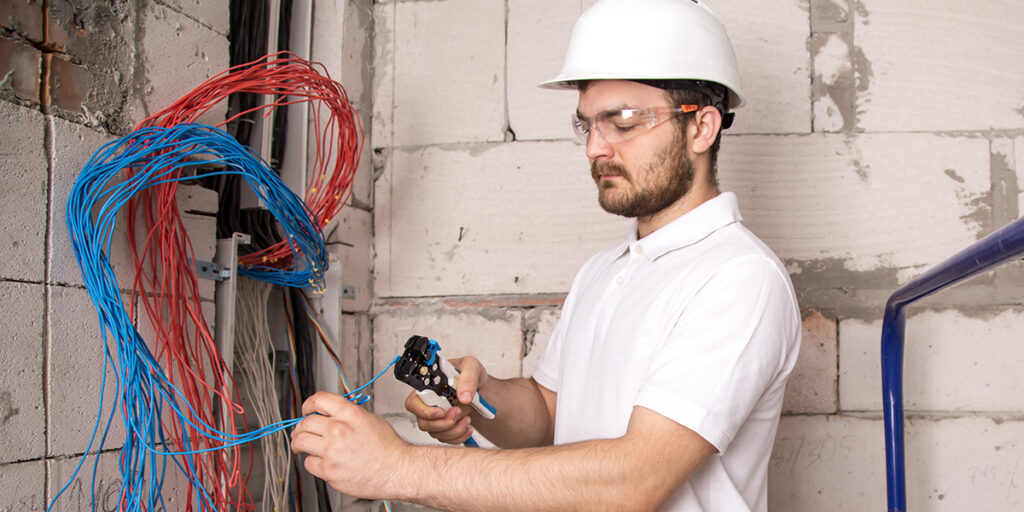If your HVAC system behaves strangely, your HVAC control board could be to blame. Topline Heating & Air, the experienced provider of HVAC services in Douglassville, PA, share tested strategies for identifying common HVAC control board problems and fixing them. These troubleshooting tips involve some electrical work and might require professional diagnostic equipment.
Do not attempt DIY work on your HVAC system unless you have proper supplies and know how to use them properly. Some property owners cause substantial property damage and frustration by trying to fix their HVAC systems.
Functions of an HVAC Control Board
The HVAC Control board coordinates the activity of the electrical components of your heating and air conditioning systems. It receives signals from the thermostat and turns the furnace and air conditioning on at appropriate times to keep the interior air at the temperature you want.
Electrical components that receive signals from the HVAC control board include the valve that allows natural gas into the combustion chamber and the igniter. The control board also regulates the activity of the blower motor that circulates air in the home and the inducer motor that moves harmful flue gases out of the house. For the AC, the control board turns the compressor and fan on or off.
A functioning HVAC control board can respond to problems with the furnace or air conditioner by changing its mode of operation. For example, it could trigger the defrost cycle if the AC coils become too cold or close the gas valve if the flame sensor does not detect a flame.
If the control board malfunctions, it could cause the system to operate in an unsafe way, putting occupants of the house at risk and causing damage to parts of the system.
1. Changes in the Performance of Your HVAC System
If your HVAC system does not turn on at all or if it heats or cools your property excessively, the control board might be the cause of the problem. A damaged transistor or cut circuit could prevent the HVAC control board from sending the proper signals.
2. Diagnostic Indicators
One way to determine if your HVAC control board is working is to look for LED lights on the control board. Your furnace access panel should have a clear viewing port to allow you or a technician to inspect the lights without removing it. The meaning of the diagnostic lights depends on the model of your HVAC system, so read the instructions to interpret the warning lights.
In some cases, the light can blink a certain number of times to indicate a problem with a specific electrical component or connection. For example, an LED could flash once to indicate a problem with the thermostat (or the connection to the thermostat) and blink twice if the igniter is not working.
If you do not see warning lights on the control board, the problem might be a malfunction of the HVAC control board itself. To view the HVAC control board, you or a qualified technician will remove the access panel on your furnace.
Some modern furnaces use smart technology that sends alerts and can even contact the fire department if an emergency strikes.
3. Physical Damage to the HVAC Control Board
Now that you can see the HVAC control board, is there any evidence of loose or disconnected wiring, burned-out circuitry, or other visible signs of damage? Do not touch or work attempt to fix the HVAC control board unless you have extensive experience with HVAC repair to avoid damaging the board further or exposing yourself to the risk of accidental injury.
4. The Control Board Not Getting Power
One reason your HVAC control system could fail, despite a lack of visible damage or warning lights, is that the control board is not receiving power. The control board typically will not receive power if the access door is open to protect anyone doing maintenance from electric shock. To verify that your control board has power, you need to tape down the switch.
5. Faults with Other Electrical Components
The HVAC control board connects closely to the other electrical components. Even if the control board itself is working correctly, it will not be able to exercise its function if the electrical devices it connects to do not work.
The Molex Plug
A Molex plug is a plug with many sockets for electrical connections between the HVAC control board and the many devices it controls. Loose or damaged connections can cause the HVAC control board to lose touch with the rest of the system.
The Transformer
The transformer supplies voltage to the HVAC control board and other electrical parts of the HVAC system. A faulty transformer will prevent the control board from operating.
The Thermostat
If you suspect a malfunctioning thermostat is preventing your HVAC system from turning on, you can use wires to jump the HVAC control board circuitry and override the thermostat’s signal. If jumping the connections to the furnace and the air conditioner causes them to turn on, then the thermostat is causing the problem.
What to Do with a Faulty HVAC Control Board
HVAC control boards are complex devices, and repairing delicate circuitry is usually not feasible. If the board itself sustains damage, the only remedy is usually to have an HVAC technician install a replacement control board. While a faulty HVAC control board can be relatively expensive, the cost of fixing more widespread damage caused by an HVAC control board can be higher.
HVAC Repair from Topline Heating & Air
When your HVAC control functions fail, you need professional diagnostics to determine whether you can repair the system by fixing a broken component, replacing the HVAC control board, or replacing your entire HVAC system with modern high-performance equipment.
If your HVAC system malfunctions, don’t wait for the system to stop working. Have a professional technician inspect your HVAC control board, repair connections, and replace the board if necessary. Call the experts at Topline Heating & Air at (717) 628-6825 for professional AC and furnace repair services.



